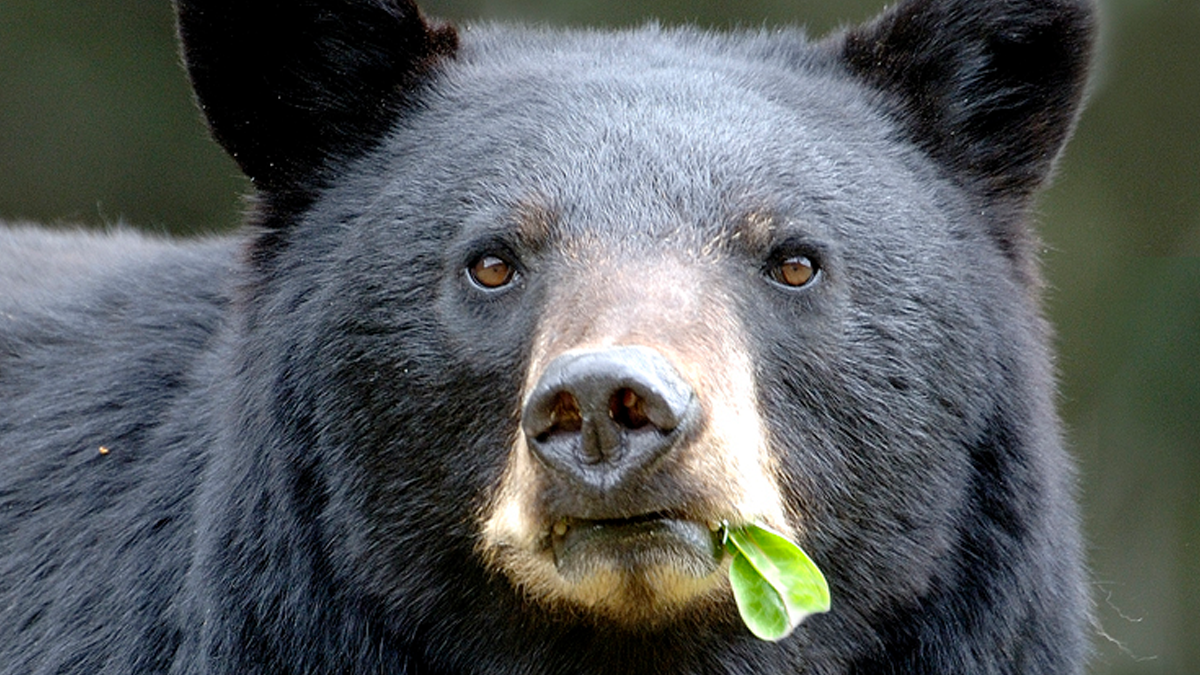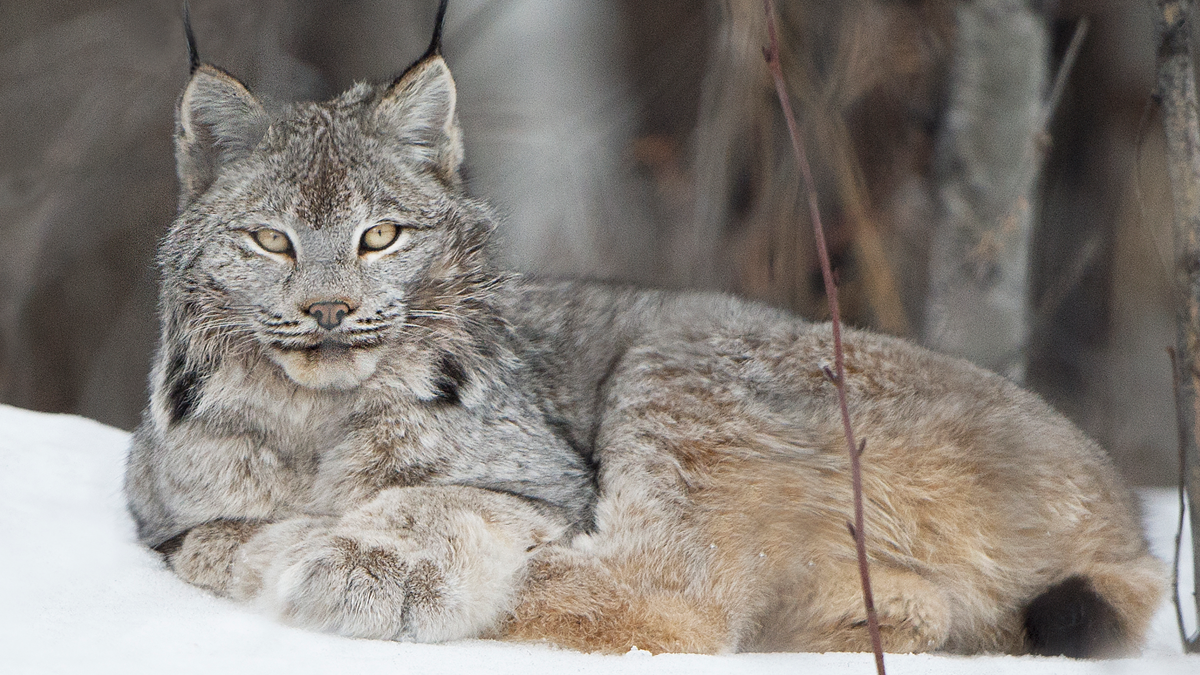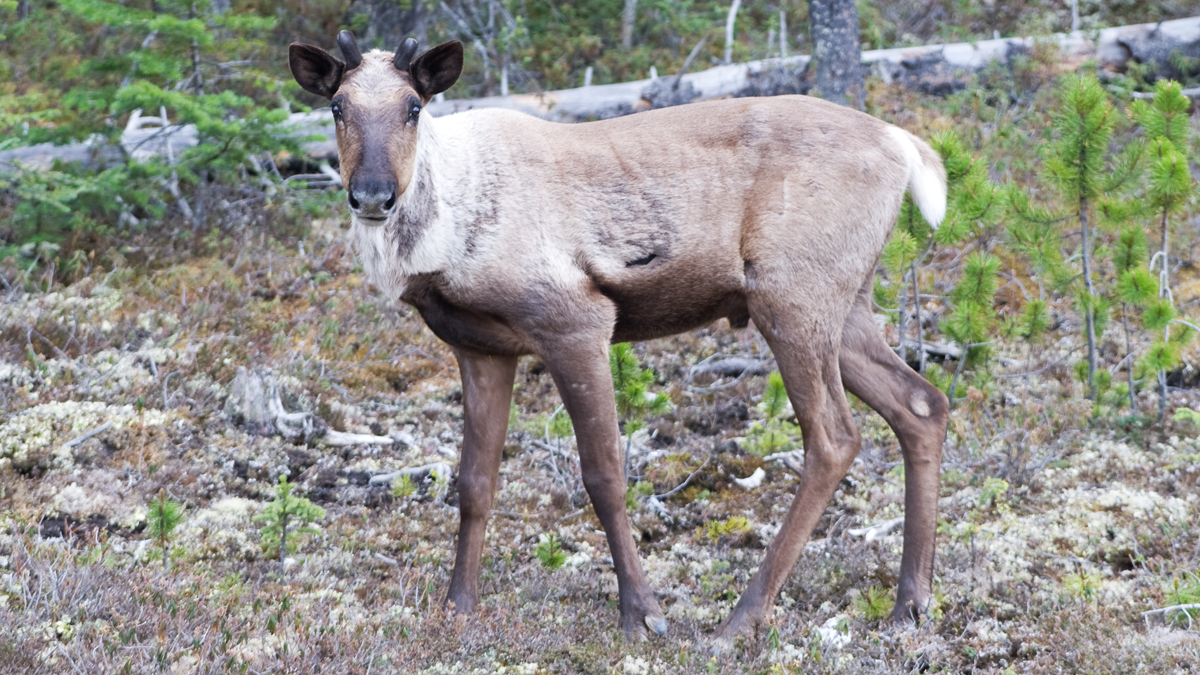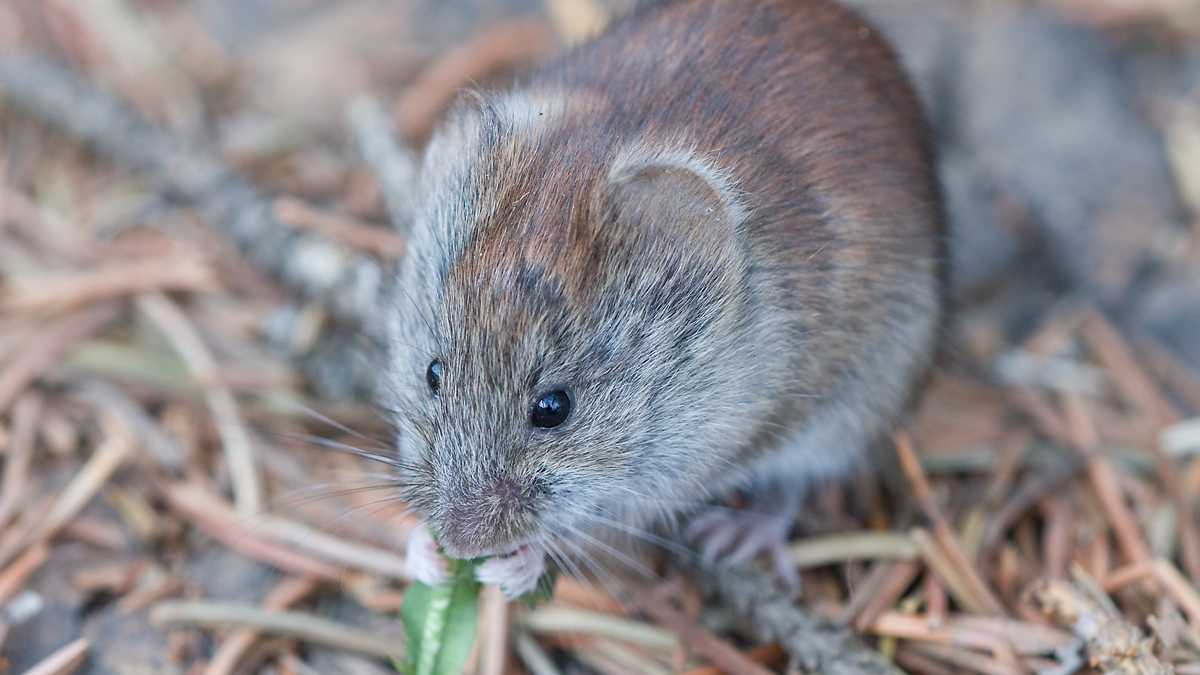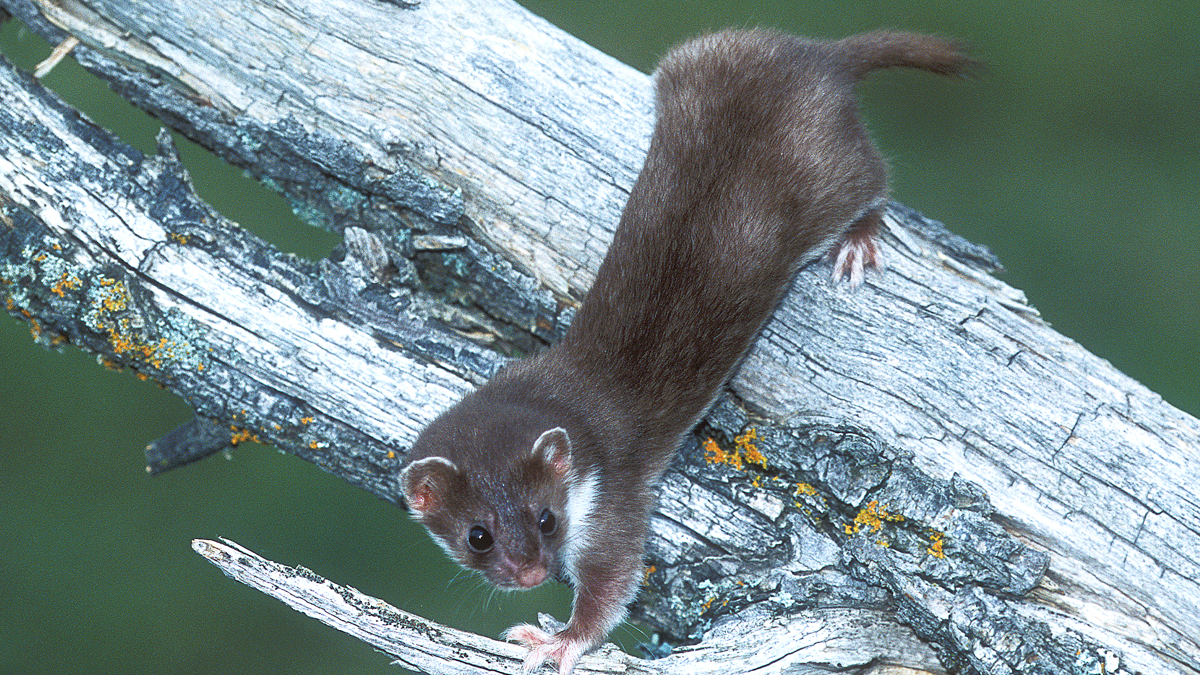Non-urgent government operations are closed December 24 to January 1, reopening January 2. View available services during this period.
Overview
Mammals are warm-blooded and distinguished from other vertebrates by the possession of hair or fur. Most mammals give birth to live offspring and produce nutritional milk from mammary glands that are used to feed their young.
Mammals are the second most numerous group of vertebrates in Alberta behind birds. While some mammals are found throughout Alberta, others are closely associated with specific habitats such as old-growth forest or native grassland.
Communities across Alberta have social, cultural and economic ties to many mammal species as they provide hunting, trapping and other recreational and subsistence opportunities.
Major threats to mammal species include habitat loss and fragmentation. Other threats include disease, extreme weather events, climate change, and competition from exotic species.
General status
In 2020, 89 native mammal species were included in Alberta’s general status assessment (see Figures 1 and 2).
- 55 mammal species (62%) were ranked secure
- 13 species (14%) were ranked sensitive
- Five species (6%) were ranked may be at risk
- Five species (6%) were ranked at risk
- Seven species (8%) were undetermined
- Four species (4%) were accidental or vagrant
The Black-footed Ferret (Mustela nigripes) has been ranked extirpated in Alberta since 2000.
Five previously not assessed species were ranked between 2000 and 2010, leaving no mammal species unassessed in 2015 and 2020 (Figure 1). Four newly assessed species were ranked exotic/alien which is why the total species count seen in Figure 1 is lower starting in 2010 (exotic species not shown).
Free ranging Plains Bison (Bison bison bison) is the only mammal species with an improved general status over the last 20 years. Its reintroduction in Alberta led to a status change from extirpated in Alberta to undetermined in 2020. Plains Bison was recommended for ‘at risk’ status in 2023 by Alberta’s Endangered Species Conservation Committee (ESCC) and its Scientific Subcommittee.
Swift Fox (Vulpes velox) is another successfully reintroduced mammal species in Alberta and has been ranked ‘at risk’ since 2000 with no status change.
Six mammal species were ranked with a decreased general status between 2000 and 2020, including Grizzly Bear (Ursus arctos), Hoary Bat (Lasiurus cinereus), Little Brown Myotis (Myotis lucifugus), Long-eared Myotis (Myotis evotis), Silver-haired Bat (Lasionycteris noctivagans) and Ord's Kangaroo Rat (Dipodomys ordii).
Of the 89 native mammal species found in Alberta, bats are the group with the highest percentage of species that are ranked ‘at risk’ and ‘may be at risk’ (22%), followed by carnivores (17%) and ungulates (17%) (Figure 3).
Detailed status
As of January 2024, 11 mammal species have detailed status designations including 8 listings under Alberta’s Wildlife Act.
Four mammal species are listed as Endangered under the Wildlife Act:
- Little Brown Myotis (Myotis lucifugus)
- Northern Myotis (Myotis septentrionalis)
- Ord's Kangaroo Rat (Dipodomys ordii)
- Swift Fox (Vulpes velox)
Four mammals are listed as Threatened under the Wildlife Act:
- Barren Ground Caribou (Rangifer tarandus tarandus)
- Grizzly Bear (Ursus arctos)
- Wood Bison (Bison bison athabascae; threatened wood bison are those that are not domestic and found within wildlife management units outlined in Schedule 6 of the Wildlife Regulation)
- Woodland Caribou (Rangifer tarandus caribou)
Western Small-footed Myotis (Myotis ciliolabrum) has a detailed status of Special Concern.
American Badger (Taxidea taxus) and Wolverine (Gulo gulo) have a detailed status of Data Deficient.
Two additional mammal species have status recommendations, including a recommendation for Endangered for Hoary Bat (Lasiurus cinereus) and a recommendation for Threatened for free-ranging Plains Bison (Bison bison bison).
Resources
- Mammals of Alberta (iNaturalist)
- ABMI Biodiversity Browser – Mammals
Charts
Figure 1. Number of native mammal species and their respective general status ranks in Alberta between 2000 and 2020
Chart data table
| Year | Secure | Sensitive | May be at risk | At risk | Extirpated/Extinct | Not assessed | Undetermined | Accidental/Vagrant |
|---|---|---|---|---|---|---|---|---|
| 2000 | 58 | 9 | 6 | 3 | 2 | 5 | 7 | 4 |
| 2005 | 57 | 12 | 5 | 4 | 2 | 5 | 6 | 3 |
| 2010 | 57 | 12 | 4 | 5 | 2 | 1 | 6 | 3 |
| 2015 | 55 | 13 | 5 | 5 | 2 | 6 | 4 | |
| 2020 | 55 | 13 | 5 | 5 | 1 | 7 | 4 |
Accessible chart description
Stacked bar graph showing the general status ranks of Alberta’s 89 native mammal species over time in 5-year intervals from 2000 until the latest assessment in 2020. In 2020, 55 mammal species (62%) were ranked secure, 13 species (14%) were ranked sensitive, 5 species (6%) were ranked may be at risk, 5 species (6%) were ranked at risk, 7 species (8%) were undetermined, and 4 species (4%) were accidental/vagrant. Between 2000 and 2020, 1 mammal was ranked with an improved general status, and 6 mammals were ranked with a decreased general status.
Figure 2. Proportion of general status ranks for Alberta’s native mammals in 2020
Chart data table
| General status rank | Count of species |
|---|---|
| Secure 61% | 55 |
| Sensitive 14% | 13 |
| May be at risk 6% | 5 |
| At risk 6% | 5 |
| Extirpated/Extinct 1% | 1 |
| Undetermined 8% | 7 |
| Accidental/Vagrant 4% | 4 |
Accessible chart description
Pie chart showing the proportion of general status ranks for Alberta’s 89 native mammal species in 2020. Total number of mammal species and the respective percentage are provided for each general status rank. In 2020, 55 mammal species (62%) were ranked secure, 13 species (14%) were ranked sensitive, 5 species (6%) were ranked may be at risk, 5 species (6%) were ranked at risk, 7 species (8%) were undetermined, and 4 species (4%) were accidental/vagrant.
Figure 3. Number of native mammal species and their general status ranks by taxonomic order in 2020
Chart data table
| Native mammal species | Secure | Sensitive | May be at risk | At risk | Extirpated/Extinct | Undetermined | Accidental/Vagrant |
|---|---|---|---|---|---|---|---|
| Ungulates (deer, elk, caribou, moose, goat, sheep, etc.) | 6 | 1 | 2 | 1 | 2 | ||
| Rodents (mice, squirrels, marmots, beaver, porcupine, etc.) | 26 | 3 | 1 | 5 | |||
| Moles and shrews | 6 | 1 | |||||
| Hares, rabbits and pika | 4 | ||||||
| Carnivores (bears, wolves, lynx, skunks, racoons, weasles, etc.) | 12 | 4 | 2 | 2 | 1 | 2 | |
| Bats | 1 | 5 | 2 | 1 |
Accessible chart description
Stacked bar graph showing the general status ranks of Alberta’s mammal species grouped by six taxonomic orders, including bats, carnivores, hares/rabbits/pika, moles/shrews, rodents, and ungulates. Rodents make up the largest order of mammals, followed by carnivores and ungulates. Bats are the order with the highest percentage of species that are ranked ‘at risk’ and ‘may be at risk’.
